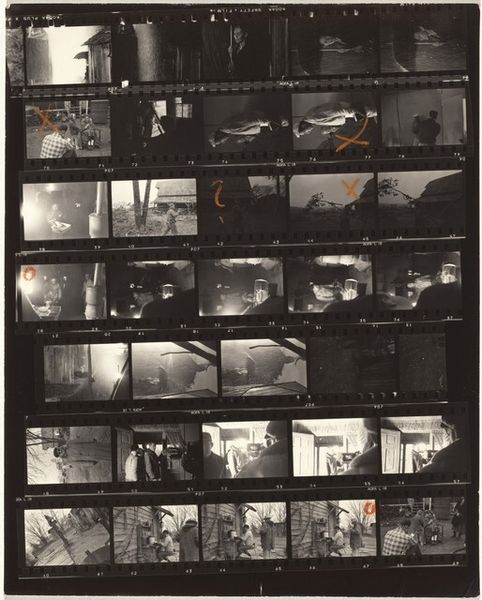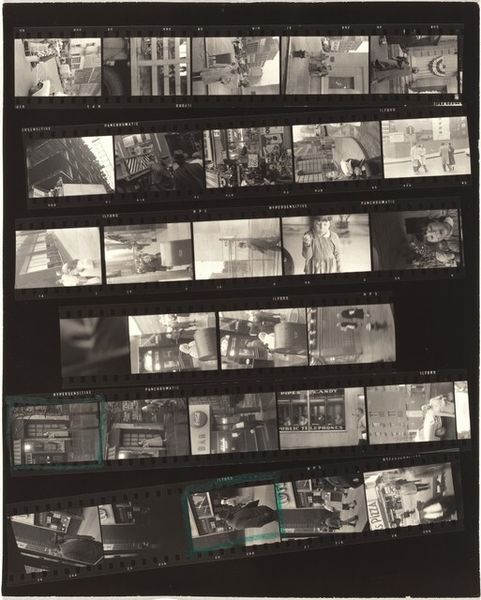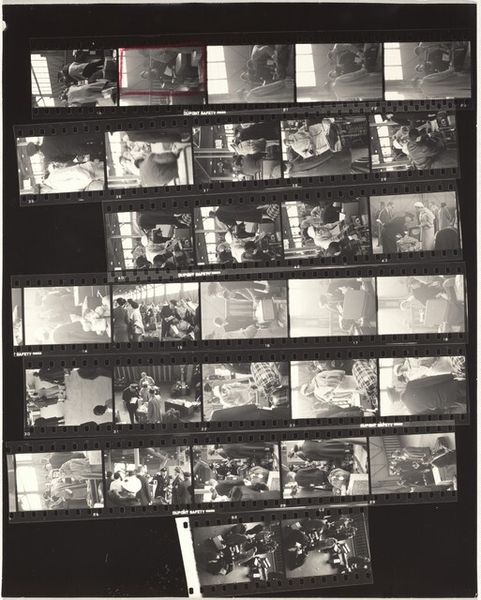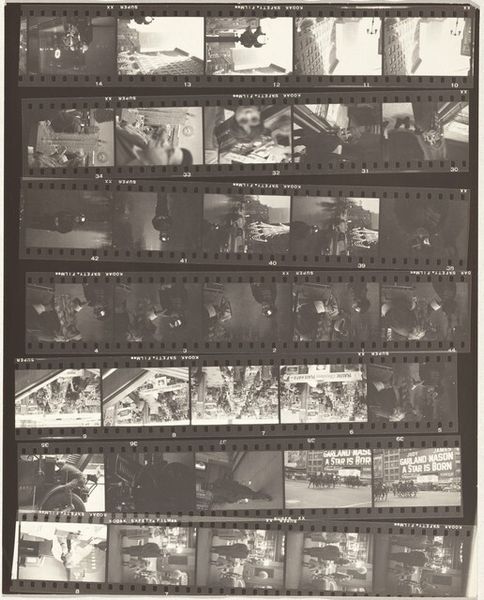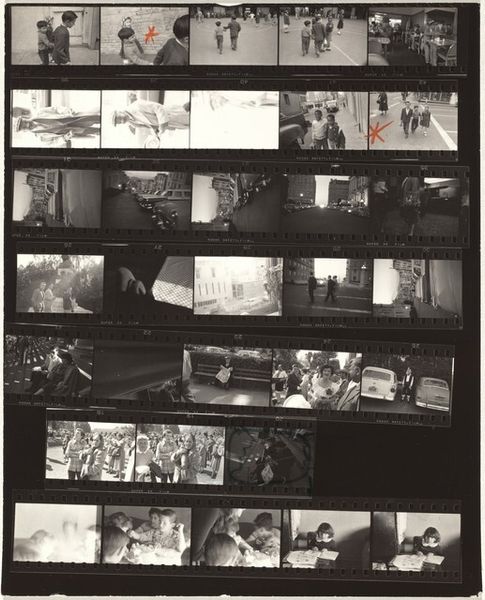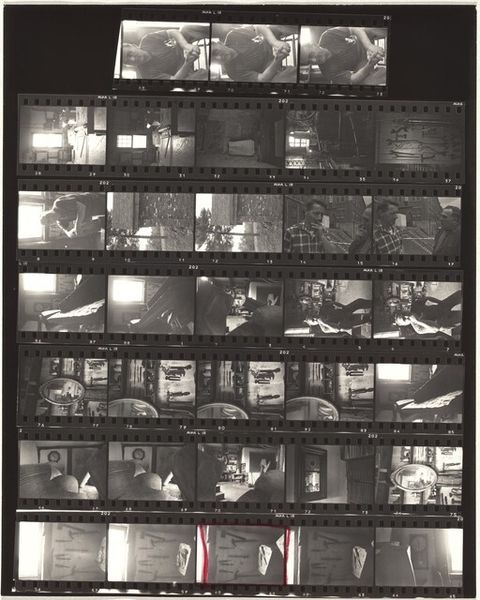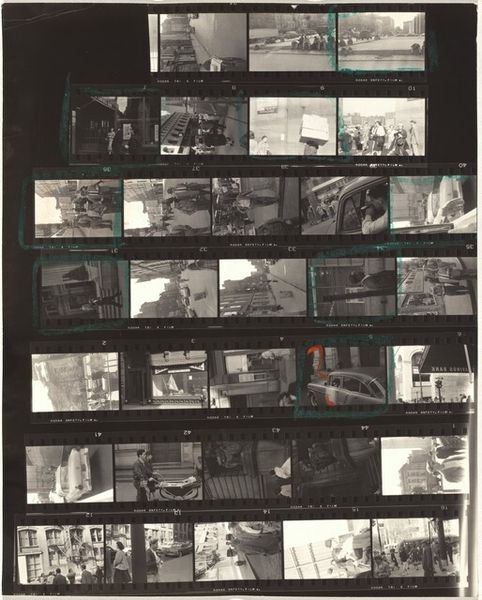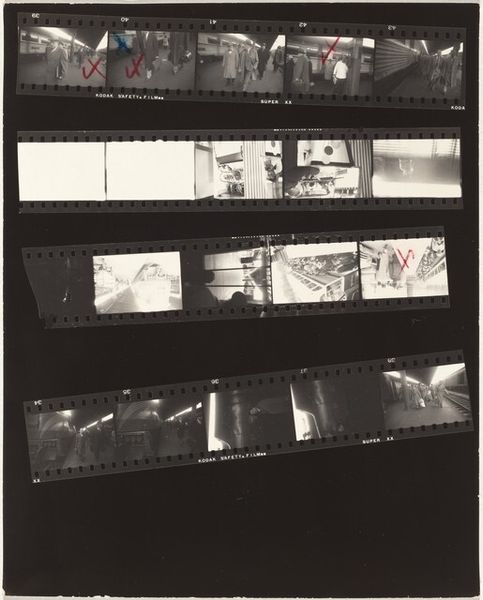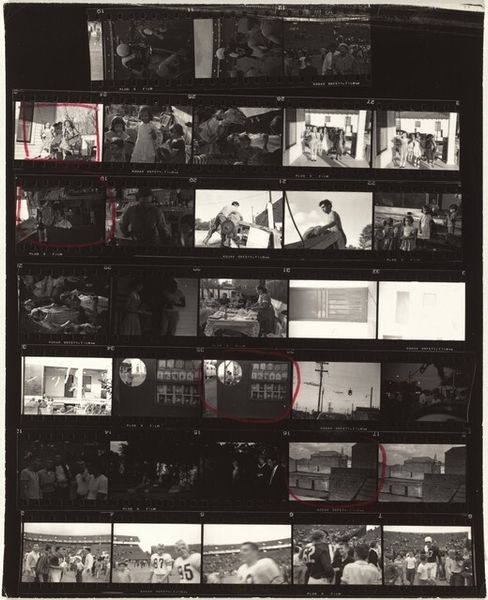
Dimensions: overall: 25.2 x 20.1 cm (9 15/16 x 7 15/16 in.)
Copyright: National Gallery of Art: CC0 1.0
Curator: Let's turn our attention to Robert Frank's "Coney Island 2," a gelatin silver print from 1960. It is part of the photographers exploration of American life in that era. Editor: My initial response is one of fragmented narrative. The sequential nature of the contact sheet creates a sense of visual rhythm, a somewhat disjunctive, like flickering memories. Curator: Frank's work, particularly within the context of "The Americans," challenges the idealized imagery of the post-war era. He focuses on the everyday lives of ordinary people, revealing social realities that were often overlooked or ignored. Consider the stark contrast to popular commercial images from the 60s. Editor: Yes, the tonal range contributes to this effect. The stark blacks and grays create a somber mood and contribute to a sense of realism but the composition with frames over frames is almost hyper-real. The materiality of the film itself becomes a focal point. We can appreciate Frank´s sharp angles and the geometric dance inside each capture. Curator: Absolutely. This work underscores how artistic endeavors in public spaces often mirrored and sometimes challenged prevailing cultural norms. This was made during times of great change, consider it’s impact amid other Civil Right photography from the time. Frank did not create an immediate sensation, he initially faced censure from the artistic and political establishment. Editor: And this "imperfect" nature—the grain, the visible frame edges—almost forces an acknowledgment of photography as both a representational medium and a constructed artifact. It breaks down the notion of a window into reality. It questions what is "real" Curator: The work serves as a commentary on American society at a time when racial segregation and social inequality were prevalent. His subjects reflect a range of social and economic backgrounds. He documents the complex layers of American society often hidden behind a veneer of prosperity. Editor: The composition and tonal balance of his film work evokes introspection and isolation. A formal and social unease and, indeed, some of Frank´s pieces like "Parade" may suggest social chaos at the core. There is both visual information but little information to extract from any frame or their conjunction. Curator: Understanding the context, the America of the 60's allows us a deeper reading into Frank’s observations. His choices around subjects were meant to convey some sense of collective social truth. Editor: Precisely, and analyzing the piece formally lets us explore just how and why it does that through a combination of raw yet thoughtful approach. A perfect dialogue.
Comments
No comments
Be the first to comment and join the conversation on the ultimate creative platform.
